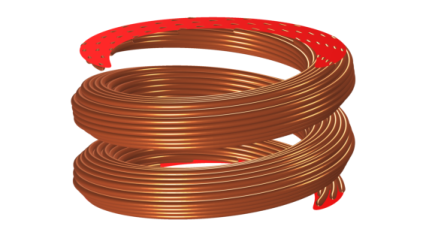

|
For an open coil, the Input subnode should never be added to boundaries that are interior to the coil’s domain selection. Note also that an open coil should have its start (Input) and end (Output) on boundaries that are exterior to the domain selection of the parent physics (for example, Magnetic Fields) and of a type that supports closure of the coil by means of an induced surface current density. The latter condition means Magnetic Insulation and, in the frequency domain, Impedance Boundary Condition.
|